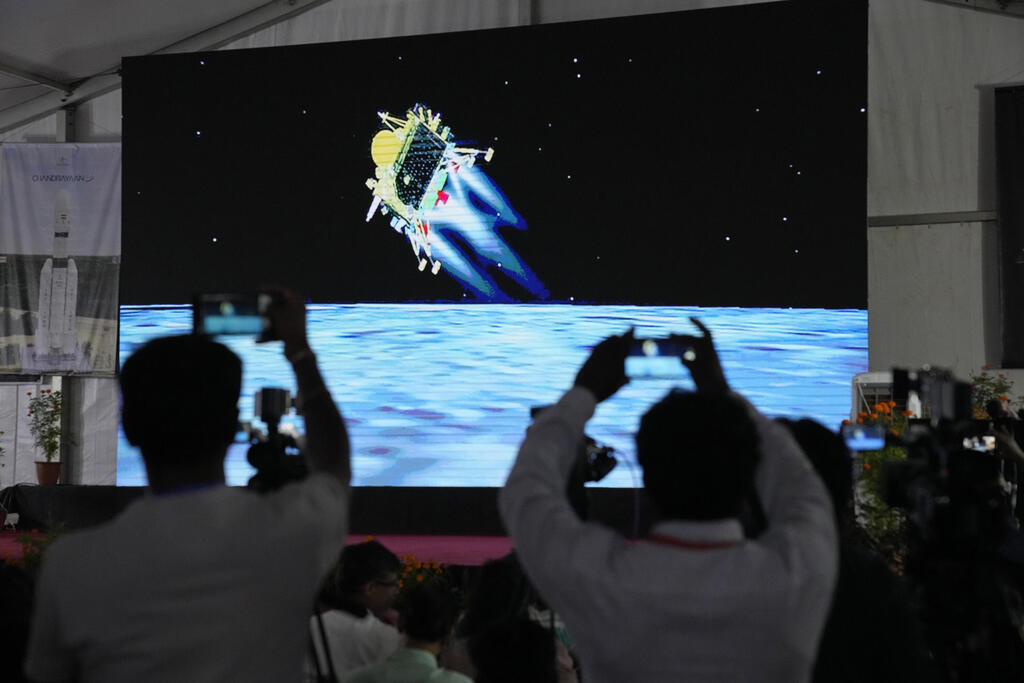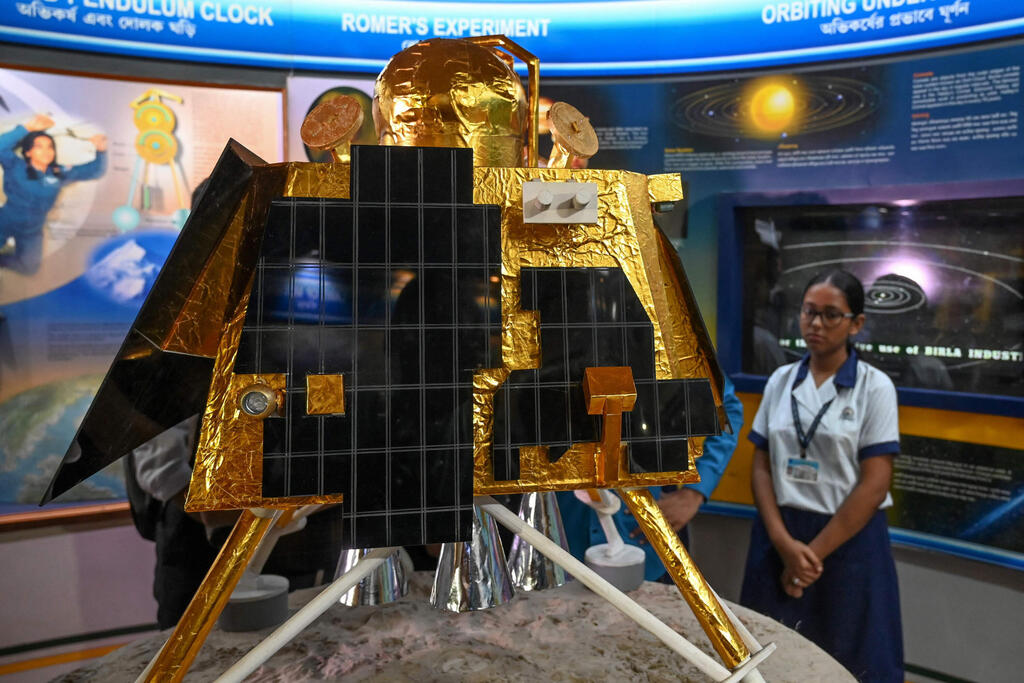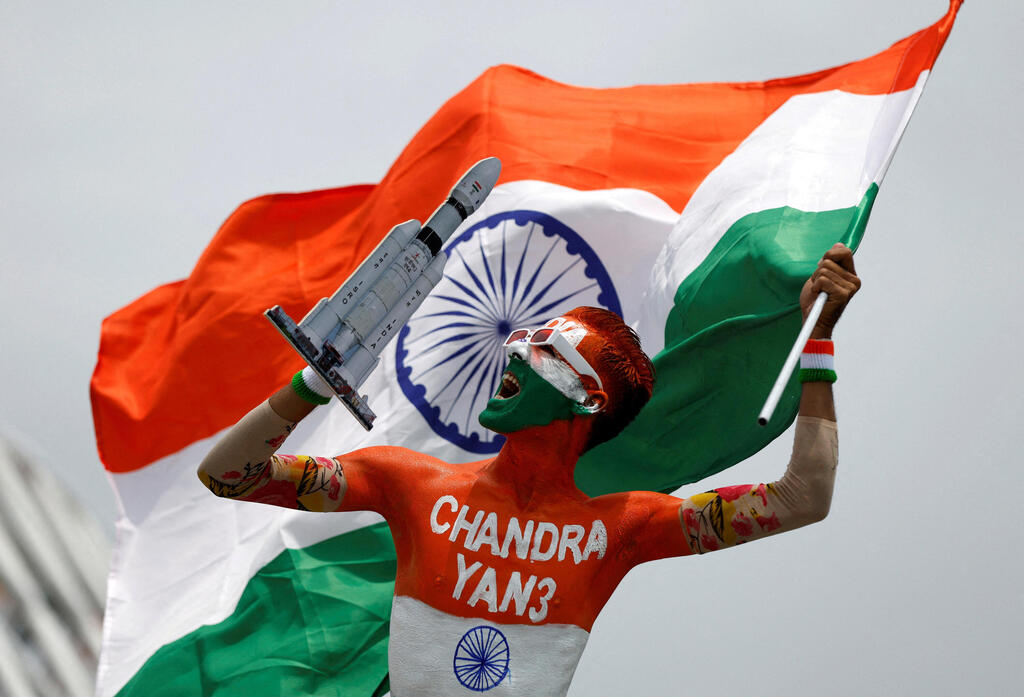Getting your Trinity Audio player ready...
India lands on the moon!
(Video: Indian space agency)
India solidified its status as a formidable space contender by achieving a remarkable feat – successfully landing the Chandrayaan-3 mission on the uncharted southern pole of the moon. The spacecraft, Chandrayaan-3, embarked on its journey last month and gracefully touched down on the lunar terrain at approximately 15:34 Israel time.
Read more:
With the successful landing, India became the first country to successfully land on the south pole of the moon and the fourth country ever to make a successful moon landing. The landing comes days after Russia's Luna-25 spacecraft crashed during a landing maneuver.
The moon's southern hemisphere , which faces Earth and where the Indian spacecraft successfully touched down, has captivated space agencies due to its promising attributes. Scientists speculate that this locale could harbor significant reservoirs of ice, serving as a resource for fuel, oxidizer and potentially even water.
This achievement propels India into the esteemed company of the previous moon landers - the Soviet Union, the United States and China - and as the pioneer in touching down on a lunar pole. Indian Prime Minister Narendra Modi was an attentive viewer of the livestreamed landing event from Johannesburg, South Africa, where he is participating in the 15th BRICS summit, showcasing India's growing global significance.
"All the people of the world, the people of every country and region: India’s successful moon mission is not just India’s alone," Modi said. "This success belongs to all of humanity. We can all aspire for the moon, and beyond."
Recent revelations about water ice traces on the moon have heightened the appeal of its southern pole for exploration. India's prior endeavor to land at the lunar south pole was in September 2019, when the Chandrayaan-2 mission tragically ended in a surface collision due to a software glitch.
Researchers at India's space agency have said that they drew lessons from the unsuccessful moon mission four years ago and implemented changes to the spacecraft that touched down on Wednesday. These alterations include a feature enabling secure landings in a broader range of challenging conditions. Within India, it was pointed out the current spacecraft boasts increased fuel capacity, extra solar panels, and reinforced legs in comparison to the one that crashed on the moon's surface in 2019.
The moon viewed through the Indian vessel
(Video: Indian space agency)
Just days before the anticipated landing of Chandrayaan-3, Russia tried to land its spacecraft on the moon for the first time in nearly half a century. However, the Luna-25 mission suffered a setback when it crashed into the lunar surface on Saturday, with Russia's Roscosmos space agency confirming the spacecraft's loss of control.
In June, Modi paid a visit to the United States, during which he entered agreements alongside President Joe Biden, signifying India's participation in the Artemis Accords and a strengthened collaboration between ISRO and NASA. Anticipated for the upcoming year is a joint effort between the space agencies to facilitate the journey of Indian astronauts to the International Space Station.
India has demonstrated exceptional efficiency compared to its global counterparts, achieving significant accomplishments with a significantly smaller annual budget for ISRO compared to NASA. In 2020, ISRO projected a budget of around $75 million for the Chandrayaan-3 mission. However, due to the Covid pandemic, the mission's launch, initially planned for 2021, faced delays.







